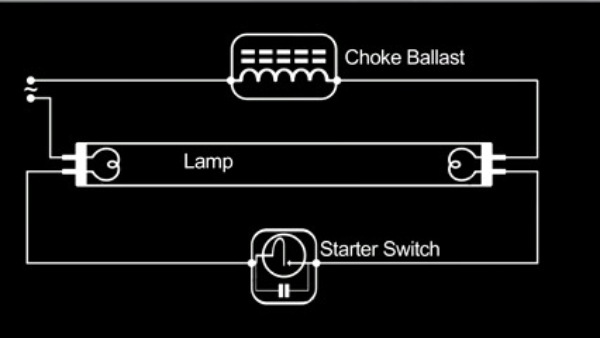Ballast
lighting device
Definition of Ballast
A lighting ballast is a device that regulates and stabilizes the electric current flowing through lighting fixtures, such as fluorescent lamps, high-intensity discharge lamps, gas discharge lamps, and plug-and-play linear LED lights.
Fluorescent and discharge lamps require enough current to preheat the electrodes and an initial inductive, high voltage spike to start the lamp. This is the job of the ballast.
Moreover, much like the human heart, which regulates blood flow, a ballast regulates the distribution of energy (electric current) in a lighting fixture to ensure it produces a consistent light output. It also stabilizes the current arc by limiting the current flowing through the lamp to avoid overheating or premature burnout.

So, the ballast serves three functions. It:
- Supplies enough current to preheat the cathodes (negatively-charged electrodes)
- Provides the high voltage spike required to start the lamp
- Acts as a current limiter, preventing the lamp from building up excessive current and burning out
There are two types of ballasts:
- Magnetic ballasts: Bigger, heavier, and typically found in older models of discharge lamps
- Electronic ballasts: Compact in size and weight and are more efficient by drawing less power and providing energy to the lamp at a higher frequency
Example of Ballast in a Sentence
"Electronic ballasts operate at a frequency between 20–60 kHz, limiting electromagnetic interference and increasing the efficacy of the lamp."
Synonyms: choke
Related Terms for Ballast
